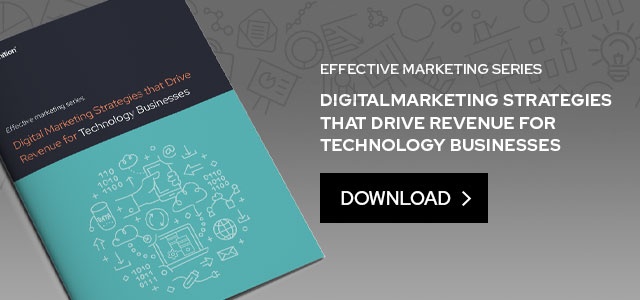The SaaS market is fiercely competitive. According to the latest stats, there are over 25,000 SaaS businesses in the world, with over 7,000 of those belonging to the marketing industry.
From website optimisation to content marketing, this article will explore the top lead generation strategies and tactics for attracting high quality leads to your SaaS offering. Use them to increase your volume of prospective customers and improve your marketing ROI.
1. Create your proposition and key messaging
Crafting an impactful and cohesive core messaging document that communicates both your value proposition and your key messages is not an easy task, and often requires the help of a third party such as a marketing agency.
You should be able, in a few short sentences, to communicate the unique, tangible value you offer to your customers. This statement, or series of statements, should be benefits-led and laser-focused on the main challenges of your target audience. If you are unclear on this, you can rest assured that your potential customers are unclear too.
Rethink your proposition and unique differentiators with this handy b2b messaging framework.
2. Build a powerful product strategy
As a SaaS business, your product is your biggest lead generation asset. Over the long-term, customers are going to side with the product that has the most relevant features, is the easiest to use and offers the most value.
With that said, a lot can be achieved with the right product strategy, which essentially boils down to two areas: pricing and value perception. Exploring different models such as freemium and trial plans, as well as working on what differentiates your product (see creating your proposition above) will directly influence customers in the consideration stage of the funnel, and will help give you an edge over your competitors.
3. Optimise your website
Your website is the storefront and digital ‘face’ of your business. It is often the first thing a prospective customer will see, after clicking an ad or a link, so you need to make first impressions count.
Depending on how you structure your website, you need to ensure the key pages – the homepage, landing pages etc – are optimised for conversions. That means that the UX is sleek and frictionless, purchases are easy to make, and that the page loads quickly on both desktop and mobile.
For a great place to start optimising your website, check out our article: The 10 biggest website mistakes and how to avoid them.
4. Use content marketing to drive inbound leads
Content marketing is an extremely powerful way to build a loyal audience and differentiate your product. Many of the largest brands in the world, including our partners HubSpot, have used content marketing to build dominant positions in their industries.
Fundamentally, good content marketing is about educating and adding value to your audience. You want to create enticing articles, guides, videos and podcasts that genuinely help and improve the lives of your audience. If you are new to content marketing start here, with our article on creating a content marketing plan that works.
5. Use PPC campaigns to target high quality leads
One way to instantly increase traffic to your website is to pay for advertising, but this is not as easy as it used to be. With Chrome getting rid of cookies and Apple blocking cross-app traffic, being able to track and attribute results to certain campaigns is becoming increasingly hard to do.
One way to navigate this complexity is to create hyper-targeted campaigns for high-intent users, leveraging marketing technology to create custom landing pages and offers. By targeting high intent keywords and phrases, and using custom assets, you can analyse what works and what doesn’t, and invest the rest of your budget accordingly. Our PPC guide from an ex-Google specialist can show you what to do.
6. Encourage referrals
With a smart referral marketing strategy, you can let your customers and brand ambassadors do the lead generation for you.
There are three main referral strategies you can use:
- Referral programmes, where your existing users invite new customers to the product
- Influencer marketing, where you use relevant industry influencers to promote your product to their audience
- Affiliate marketing, where content producers will promote or advertise your product for a percentage of the sale
All three of these strategies have been used effectively by global software companies, but the right one for you will depend on your market, your customer personas and your budget.
7. Always be networking
There’s an old saying that ‘your network is your net worth’ and this still holds true today, when many of the products we buy are digital. For a SaaS business, it’s important to not rely entirely on your website for leads. You must always be looking to expand your audience beyond your obvious customer type, gaining access via different platforms and publishers to audiences who may need your product but would never find you via search or PPC.
You can either network manually, which is most effectively achieved via personalised LinkedIn outreach, or you can incentivise other businesses and platforms to talk and promote your product, often for a cut of the sale.
8. Keep in touch with your customers
Over 91% of businesses with ten or more employees use a Customer Relationship Management platform to track and keep in touch with customers. If you are in the 9% not yet using a CRM, or are perhaps a fledgling startup experiencing fast growth, now is the time to invest and build the infrastructure for high-value customer relationships.
Another key area to invest in is payment software. Ensure it has the features you would like, for example can customers pay in instalments? Can you view and use the purchasing data? When synced with your CRM, good payment software can help you achieve low subscriber churn, increasing your revenues as you grow.
9. Deploy marketing automation technology
SaaS marketing automation is the process of automating marketing activities with the use of software. With the right set up, it can help deliver the exact right message at the right time, improving the chances of a conversion.
As a growing SaaS business, it will not be possible for you to contact or stay in touch with every customer. Hence, marketing automation is invaluable for routine yet important tasks, such as onboarding, ongoing nurturing and persuading potential customers to trial your product with a timely and relevant offer.
As HubSpot Diamond Partners, we can help you get up and running with marketing automation quickly.
Are you looking to improve your volume of high quality leads? Request your SaaS Marketing Assessment today and let our team advise you on the best lead generation strategy for today’s economy.
You might also be interested in our guide, "Digital Marketing Strategies that Drive Revenue for Technology Businesses"





